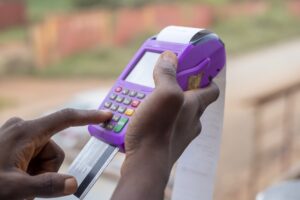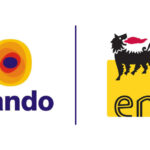Bitcoin
The Integration of Robotics And Coding In The Classroom

The Integration of Robotics And Coding In The Classroom
It is essential for educators to give pupils the right knowledge and skills they need to succeed in the digital age; the period of rapid technological innovation. A holistic approach that encourages collaboration, creativity, problem-solving, and critical thinking is provided by incorporating robotics and coding into the classroom. This article discusses the advantages and difficulties of using robots and coding in the classroom, as well as practical implementation tactics: THE INTEGRATION OF ROBOTICS AND CODING IN THE CLASSROOM: A COMPREHENSIVE APPROACH TO 21ST CENTURY EDUCATION.
AN OVERVIEW OF ROBOTICS AND CODING
The design, manufacture, coding, and application of robots are all part of the multidisciplinary discipline of robotics. It includes several facets of artificial intelligence, computer science, mechanical engineering, and electrical engineering.
Fundamentally, robotics is concerned with building intelligent robots that can operate on their own or under remote control. These devices, referred to as robots, usually created to interact with their environment and carry out specified tasks.
Industrial robotics and service robotics are two broad categories that can be used to the subject of robotics.
The main focus of industrial robotics is the employment of robots in manufacturing and industrial environments. These robots are frequently employed to automate risky and repetitive jobs like welding, painting, and assembling. Industrial robots are made to be accurate and effective, increasing productivity and lowering the possibility of human error or harm.
One of the major goal of service robotics, on the other hand, is to create robots that can help people in a variety of contexts, including healthcare, agriculture, education, and entertainment. Service robots are designed to carry out duties that can enhance safety, provide convenience, and improve overall quality of life. Robotic exoskeletons that help people are an example of service robots.
Also, robotics as a discipline has made considerable strides recently, particularly in the area of artificial intelligence. Robots powered by AI are outfitted with sensors, actuators, and complex algorithms that enable them to detect and comprehend their surroundings, make decisions, build on prior knowledge, and adapt to changing circumstances. As a result, difficult tasks like speech recognition, natural language processing, and object recognition have been made possible by robots.
The ultimate goal of robotics is to build robots that can carry out human-like jobs, interact naturally with people, and make a variety of contributions to society. The sector is still developing quickly, with continual research and development expanding the capabilities of robots.
Whereas on the flip side, the term “coding on its own aspect” refers to the procedure of writing commands or instructions in a programming language to direct a machine or piece of software what to do. Writing lines of code, which are essentially a collection of precise and organized instructions that enable a computer to carry out particular activities or functions, is a necessary part of the process. These commands might be as basic as showing words on a screen or as complicated as manipulating data, creating software, or creating algorithms to solve issues. Software creation, web development, data analysis, and artificial intelligence are just a handful of the industries that use coding. Effectively writing, testing, and debugging code necessitates logical reasoning, problem-solving abilities, and attention to detail.
The Need And Benefits of Integration of Robotics And Coding
There are several benefits of integrating robotics and coding in classrooms and education
- Enhancing Problem-Solving and Critical Thinking Skills: Robotics and coding engage students in hands-on activities that require logical reasoning and problem-solving. By experimenting with different coding sequences and troubleshooting robotic systems, students learn how to analyze complex challenges and devise innovative solutions.
- Fostering Innovation and Creativity: By combining robots and coding, instructors provide students the tools they need to think creatively and use what they’ve learned in real-world situations. They are urged to let their creativity run wild and come up with novel ways to build and program robots to carry out particular jobs.
- Fostering Teamwork and Collaboration: Robotics projects frequently require students to work in groups, which promotes cooperation and teamwork. Students improve their ability to communicate clearly, assign assignments, respect different ideas, and appreciate others’ viewpoints through cooperative problem-solving. their capacity for collaboration.
- Increasing Engagement And Enthusiasm: Students that participate in robotics and coding activities receive tangible results, which increases their sense of accomplishment and enthusiasm to learn. As they consistently iterate, experiment, and enhance their robotic and coding designs, they also acquire a growth mentality.
- Fosters The Development Of Computational Thinking Abilities: Coding requires the dissection of difficult issues into smaller, more manageable chunks. Students gain computational thinking abilities through this process, which they can use in a variety of personal and professional contexts.
- Boosts Motivation And Engagement: The use of robots and coding makes learning more interactive and hands-on, boosting motivation and engagement among students. When they can apply what they are learning in the actual world, students are more likely to be motivated to learn.
- Encourages Cross-curricular Learning: Coding and robotics may be used to teach a variety of disciplines, including math, physics, engineering, and even the arts. Students’ learning is made more thorough because to this interdisciplinary approach, which enables them to understand the links between many courses.
- Prepares Students For Future Careers: Coding and robotics skills are increasingly in demand in today’s job market. By introducing these concepts in education, students gain valuable skills that can help them in future careers in fields like engineering, computer science, and technology.
- Boosts Self-esteem And Confidence: Building and programming robots successfully can offer kids a sense of accomplishment and confidence. It fosters their self-confidence and motivates them to take on new challenges.
Practical Strategies For Implementation
- Curriculum Integration: Integrate robotics and coding into existing subjects like science, math, and technology by designing cross-curricular projects. For example, students can program robots to simulate scientific experiments or solve mathematical problems. This approach ensures that learning remains connected to real-world applications
- Teacher Training: Give educators the chance to take advantage of professional development opportunities to become acquainted with the theories, resources, and tools of robotics and coding. Giving teachers the essential training and knowledge guarantees successful implementation and ongoing assistance for pupils.
- Interactive Learning: Include interactive exercises using robotics kits, coding environments, and programming languages. This interactive method encourages creativity and problem-solving by allowing students to learn via hands-on experience and exploration.
- Industry Expert Collaboration: Create alliances with regional businesses and organizations that focus on robotics and coding. Guest lecturers, field visits, and mentoring initiatives can highlight real-world applications and give students priceless knowledge and insights.
- Promote Project-based Learning: Get students interested in robotics and coding by using project-based learning strategies. This entails giving students assignments or challenges that call on them to use their knowledge of robotics and coding to address real-world issues. This encourages teamwork, critical thinking, and problem-solving abilities.
- Foster Collaboration And Teamwork: Encourage students to work in teams or groups when engaging in robotics and coding activities. This promotes collaboration, communication, and cooperation among students, which are important skills for the 21st century workforce.
- Continued Assistance: By sponsoring mentoring programs, hosting frequent seminars, granting access to online resources, and other means, continuously help educators and students. This guarantees so students may get the direction and help they need, and that teachers can continually enhance their abilities.
- Display Student Work: Honor students’ accomplishments in robotics and coding by planning occasions or exhibitions where they can display their creations. As a result, more children are inspired to participate in robotics and coding and feel a sense of pride and determination.
- Encourage Parent Participation: Inform parents of the value of robotics and coding education and involve them in the process by hosting workshops or informational sessions. Parents’ knowledge and support are strengthened as a result, which encourages pupils to participate and engage more.
- Evaluate And Adapt: Continuously assess the program’s efficacy in teaching robotics and coding and make appropriate modifications in response to teachers’ comments. parents and pupils. This can entail gathering information on student performance, running polls or focus groups, and making adjustments in light of the results.
- Provide Tools And Materials: Ensure that schools have the equipment they require, such as robotics kits, coding programs, and laptops and PCs. This might be accomplished by allocating funds, applying for grants, or requesting support from other organizations like business foundations or educational institutions.
- Create Specific Areas: Designate particular areas in classrooms, such as makerspaces or robotics laboratories, where students can participate in hands-on robotics and coding activities. All pupils should be able to access these areas, which should include the necessary tools and equipment.
Implications And Solutions of Robotics and Coding
IMPLICATIONS
- Restrictions on Resources: Budgetary restrictions and restricted access to tools and resources might be problematic. Seek To guarantee that all children have equitable access to robotics and coding tools, funding opportunities through grants, collaborations, and community support are available.
- Teacher Confidence: Teaching coding and robotics to educators might be intimidating for some. To increase teachers’ confidence and ability in integrating these technologies, provide them with access to online materials, peer support networks, and ongoing professional development opportunities.
- Limited Financing And Resources: Due to financial restrictions, schools could find it difficult to purchase the essential robotics kits, computers, and software.
- Teacher Preparation And Experience: Many instructors might not possess the knowledge and abilities necessary to instruct robotics and coding successfully, which may make it difficult for them to incorporate these topics into the curriculum.
- Time Restraints: The current curriculum may be overloaded and offer little room for extra topics like coding and robotics.
- Limited Access And Equity: The instruction of robotics and coding may not be equally available to all schools or pupils, resulting in unequal educational possibilities.
Solutions
- Seek External Funding: Schools can apply for grants or explore partnerships with local businesses or organizations that may be willing to provide financial support for robotics and coding education
- Professional Development For Teachers: Provide thorough training courses and chances for instructors to advance their coding and robotics knowledge and abilities. Workshops, online classes, or partnerships with educational institutions can all help to support this.
- Integration Of The Curriculum And Time Management: Find ways to incorporate robotics and coding into existing disciplines by identifying overlapping concepts or topics. This Without requiring more time, I can assist in streamlining the curriculum and establishing chances for robotics and coding education.
- Collaboration And Partnership: Schools can collaborate with regional businesses or colleges that focus on robotics and coding. Students and teachers may benefit from having access to resources, knowledge, and mentoring in this way.
- Put An Emphasis On Inclusiveness And Accessibility: Make sure that robotics and coding instruction is available to all kids, regardless of their socioeconomic situation or background. Scholarships, after-school or extracurricular programs, or collaboration with community centers or libraries to enable access to robotics and coding resources are all ways to accomplish this.
- Foster A Culture Of Innovation: Create an environment that encourages experimentation, failure, and learning from mistakes. This can help students and teachers feel comfortable exploring and experimenting with robotics and coding, leading to greater engagement and progress
- Use Open-source Software And Inexpensive Options: Investigate inexpensive robotics kits and platforms as well as open-source software to make robotics and coding instruction more accessible and economical for schools with limited funding.
- Continuous Review And Improvement: Monitor the program’s efficiency on a regular basis, get input from parents, teachers, and students, and make the necessary changes to make it better over time.
Conclusion:
By incorporating coding and robotics into the classroom, educators are able to provide kids the critical 21st-century skills they need to become active producers rather than passive users of technology. This all-encompassing approach to education gives students the skills they need by encouraging problem-solving, creativity, teamwork, and critical thinking. to prosper in a world that is increasingly digital. Schools can successfully incorporate robotics and coding education, empowering kids to become the innovators and tech-savvy leaders of tomorrow, with strategic planning, teacher training, and partnership with industry professionals. See
More from my site
BANKING
How To Become A MoniePoint POS Agent

More from my site
Bitcoin
The Legal and Regulatory Framework for Real Estate Investment

The Legal and Regulatory Framework for Real Estate Investment
Nigeria’s growing population, urbanization, and rising demand for residential and commercial real estate have made real estate investment there an alluring prospect. However, it’s crucial to comprehend the legal and regulatory environment controlling the real estate industry in Nigeria before making any investments. The goal of this article is to present a thorough examination of Nigeria’s real estate investment laws and regulations: “The Legal and Regulatory Framework for Real Estate Investment.”
The Meaning of Real Estate and Real Estate Investment
Real Property
A tangible property made up of land, any buildings, and any natural resources is referred to as real estate. This include commercial properties like office buildings and retail stores, industrial properties like factories and warehouses, residential properties like homes and apartments, and vacant land. True Natural resources like water, minerals, and agriculture are often included in real estate. A tangible asset, real estate can be purchased, sold, rented, or developed for a variety of uses. A few examples of the variables that affect real estate value are location, demand, state of the economy, and property quality.
Investment in Real Estate
Buying, holding, managing, renting, or selling real estate with the intention of making a profit is known as real estate investment. There are various ways to accomplish this, including:
- Rental Properties: To generate rental revenue, investors buy properties and lease them to tenants.
- Property Flipping: When an investor purchases a property, they make improvements or renovations before selling it for a profit.
- Real Estate Investment Trusts (REITs): Investors can buy shares in REITs, which are companies that own, operate, or finance income-generating real estate across a range of property sectors.
- Real Estate Development: After buying land, investors can turn it into residential or commercial properties, which they can then either rent or sell.
Investing in real estate has various possible advantages, such as:
- Potential for Long-Term Capital Appreciation: Historically, real estate values have tended to rise over time, offering the possibility of long-term capital appreciation.
- Rental Income: Having rental properties might result in a reliable source of income from rentals.
- Diversification: Using real estate in an investing portfolio as a technique for diversification may lower total risk.
- Tax Benefits: Investors in real estate may be able to take advantage of a number of tax breaks, including 1031 exchanges, mortgage interest deductions, and depreciation deductions.
Nonetheless, investing in real estate includes risks and difficulties such as changes in the real estate market, complicated property management, difficulties with funding and liquidity, and legal and regulatory issues.
When approaching real estate investing with careful consideration of market conditions, financing choices, and risk management, it can be a feasible strategy for wealth development, income generation, and portfolio diversification. A comprehensive understanding of market trends, property value, and property management techniques is frequently necessary for successful real estate investment.
Laws Guiding Real Estate Investment in Nigeria
Nigerian real estate is subject to a number of laws, rules, and government organizations. The following are some of the main legal frameworks that govern real estate investment in Nigeria:
- Land Use Act: A key component of legislation governing land ownership and use is the Land Use Act of 1978. and apply within Nigeria. It outlines the processes for obtaining and transferring land rights and gives the governor of each state the authority to oversee and administer all urban land within that jurisdiction. The Act also governs the issuance of Certificates of Occupancy (C of O) and the rights of occupancy, as well as the acquisition of land for real estate development.
- Nigerian Urban and Regional Planning Law: Under this law, planning-related activities in Nigeria are governed. It offers guidelines pertaining to development permits, zoning, construction codes, and land use. Real estate investment projects must adhere to local and regional planning regulations in order to guarantee that the appropriate permits are secured for development and land usage.
- Land Registration Laws: Land registration is a requirement in Nigeria. is regulated by a number of regulations, such as the Land Registration Act and the Land Instruments Registration Law. These laws provide a framework for creating and defending property rights by regulating the registration of land titles, interests, and transactions. For real estate investors to safeguard their ownership claims and safeguard their real estate holdings, proper land registration is essential.
- Property And Conveyancing Rules: In Nigeria, these rules control who owns, transfers, and conveys property. They include instructions for buying, selling, and transferring real estate, as well as the legal prerequisites for carrying out real estate transactions and registering real estate conveyances.
- Tenancy Laws: Rental agreements and landlord-tenant relations are governed by tenancy laws in Nigeria. They outline the responsibilities and rights of both landlords and tenants, the processes for reviewing rent, and procedures for resolving tenancy agreement problems.
- Regulatory Agencies: The Nigerian real estate industry is governed by a number of regulatory bodies, which include the Federal Housing Authority, the Nigerian Investment Promotion Commission (NIPC), the Nigerian Urban and Regional Planning Commission, the Federal Ministry of Power, Works and Housing, and the Real Estate Developers Association of Nigeria (REDAN). These organizations offer industry standards, license requirements, and regulatory rules for building, investing, and developing real estate.
To guarantee compliance and reduce the risks connected with real estate investments, it is crucial for Nigerian real estate investors to become knowledgeable about these rules and regulations, consult with legal counsel, and interact with the appropriate regulatory bodies. Furthermore, regional or state-specific cultures and practices may have an impact on real estate. investment, therefore careful research and local knowledge are necessary for investment success in Nigeria’s real estate market.
Regulatory Framework For Real Estate In Investment in Nigeria
- The Nigerian Constitution and Land Tenure System: The legal basis for land tenure and ownership in the nation is provided by the Constitution. It acknowledges that land is owned by the government and that people and businesses can use and occupy it under different types of tenures, such certificates of occupancy or leaseholds. Real estate investors must be aware of the land tenure laws that are in effect in a certain area.
- Land Ownership and Acquisition: Under the Land Use Act of 1978, the state governors of each of Nigeria’s states are the legal owners of all land. Investors need to understand the procedure for land acquisition, which frequently entails buying land from private sellers or local governments or obtaining a Certificate of Occupancy (C of O) from the state government. Purchasing land for real estate investment requires careful consideration and appropriate legal papers.
- Titles and Registration: In order to ensure the security of real estate investments in Nigeria, it is essential to get correct legal titles and register property. The procedure entails carrying out a title search, confirming legitimacy, and transferring ownership by signing formal documents like conveyance or assignment deeds. Investors who want to protect their investment and make sure that registration criteria are met should collaborate with licensed legal experts.
- Approvals for Real Estate Development: Before starting any real estate development projects in Nigeria, investors need to get the required permissions and approvals. This comprises obtaining building approvals, environmental impact assessments, and development permits from the appropriate local government agencies and regulatory organizations. Fines, demolition orders, or delays in projects are possible outcomes of noncompliance.
- Real Estate Investment Vehicles: Real estate investors in Nigeria have access to a variety of investment vehicles, such as joint ventures, real estate development firms, and real estate investment trusts (REITs). Making wise investment selections requires having a thorough understanding of the regulatory requirements, tax ramifications, and legal frameworks of various investment vehicles.
- Lease Agreements And Tenancy Rules: Knowledge of tenancy rules and regulations is essential for investors who are involved in leasing or renting. For example, requirements on notice periods, eviction procedures, rent payment, and lease agreements are provided under the Lagos lease Law of 2011. Respecting these laws helps keep the landlord-tenant relationship positive by defending the rights of both parties.
- Taxes and Real Estate Investment: In Nigeria, real estate investments are liable to a number of tax duties, such as stamp duties, value-added tax (VAT), capital gains tax, and property taxes. In addition to ensuring compliance, knowing the tax laws and consulting with tax experts can assist investors optimize profits while lowering their tax obligations.
- Regulatory Agencies and Associations: The real estate industry in Nigeria is governed by a number of government agencies and associations. These include State Town Planning Agencies, the Federal Housing Authority, the Federal Ministry of Works and Housing, and regulatory organizations like the Nigerian Institution of Estate Surveyors and Valuers (NIESV) and the Real Estate Developers Association of Nigeria (REDAN). Getting acquainted with These groups and their functions can guarantee industry standards are followed and offer insightful information about the sector.
Conclusion
Analyzing the legal and regulatory framework for real estate investment in Nigeria is essential for any investor looking to capitalize on the opportunities in the growing real estate sector. By understanding the constitution, land tenure system, acquisition processes, development approvals, investment structures, tenancy laws, taxation, and relevant regulatory bodies, investors can make informed decisions, mitigate risks, and navigate the legal landscape successfully. Seeking legal advice from professionals experienced in Nigerian real estate law is highly recommended to ensure compliance and protect investments in this dynamic sector. [invest]
More from my site
BANKING
Crypto and Blockchain: Shaping the Future of Payments in Africa

Cryptocurrency and Blockchain: Shaping the Future of Payments in Africa
Cryptocurrency and blockchain technology are revolutionizing how payments and financial transactions are conducted worldwide, and Africa is no exception: “Crypto & Blockchain: Shaping the Future of Payments in Africa.”
With Africa’s limited traditional banking infrastructure, millions of people are excluded from financial services, leading to slow business and economic growth.
However, with the high rate of cryptocurrency adoption in many African countries, noticeable changes are taking place. People initially excluded from the financial system participate in digital transactions, making cross-border payments and investments, ultimately changing their lives and positively impacting the economy.
This article discusses different ways cryptocurrency and blockchain technology are shaping the future of payments in Africa.
How Cryptocurrency and Blockchain are Shaping the Future of Payments in Africa
Financial Inclusion and Access to Capital
Financial exclusion, that is, lack of access to capital and other financial services, is one of the major problems facing the African payment infrastructure. The World Bank reported in 2014 that over 350 million African adults had no bank account.
That number has decreased in recent years due to the success of mobile money programs. But a recent BPC fintech report shows there’s a lot more to be done, as it reported that 57% of Africans do not have access to any kind of bank account, including mobile money accounts.
This is where cryptocurrency and blockchain stepped in and are already contributing massively to the payment revolution in Africa. Cryptocurrency became popular in Africa in the heat of the COVID-19 period, recording an adoption rate of 1200% between 2020 and 2021.
Individuals initially excluded from the traditional financial systems are now actively participating in the crypto market with just their phone and internet connection. The availability of crypto ATMs and over-the-counter (OTC) markets where you can trade cryptocurrency and receive cash has made it possible for people in underserved communities to access financial services.
Cross-Border Payments
African countries engage massively in international trade within themselves and with other continents. Many small businesses in Africa export goods in different quantities and import them to resell or for production. However, traditional cross-border payments can be expensive and slow due to the fragmented financial landscape of the continent and the use of different currencies.
According to the World Bank, the average cost of sending $200 was 6.2% in Q4 2022, with mobile money being the cheapest at 4.5%. That’s between $9 and $12 in transfer fees for a payment of just $200. And it could be more, especially if the sender uses a traditional bank (11.8%) or a money transfer operator (5.4%). The cost could be quite unbearable when the exchange rate and preferred transfer speed are factored in.
Cryptocurrencies, such as bitcoin, ETH, BNB, and stablecoins, are facilitating borderless and cost-effective international money transfers, reducing the fees and time involved. Transferring cryptocurrency from one wallet to another is one of the cheapest ways to make cross-border payments or remittances, and transactions are completed in 24 hours or less. For example, the average cost of sending Bitcoin to another wallet is $4.05, while Ethereum costs $0.73 per transaction.
Store of Value
The inflation rate in most African countries is skyrocketing daily, eroding the value of their currencies and making imports and even internal purchases expensive. For example, in Nigeria, the dollar price in the parallel market went from N736 in January to N1300 in October 2023. That shows a 76.6% increase in the dollar’s value within ten months.
According to Business Insider Africa, many African countries are experiencing a prolonged period of high inflation. In the list, Zimbabwe stands top with an inflation rate of 101%. Others are Serra Leone (44.81%), Ghana (43.1%), Egypt (36.5%) and Ethiopia (28.8%). Nigeria, the largest African country, also made the list with an inflation rate of 24.08%.
The rising inflation in many African countries has led individuals and businesses to look for a reliable way to save money without losing value. Cryptocurrencies, especially stablecoins, have proven to be a good store of value and a reliable alternative for financial transactions.
Integration with Mobile Payments
Many Africans use mobile phones for payments and transactions, and cryptocurrencies can integrate seamlessly with mobile payment platforms, making it easy for people to transact with them.
Mobile payment platforms like Google Pay, BitPesa, Blockonomics, PayPal, and more allow users to make payments in cryptocurrencies for purchases on digital platforms.
People bypass many unnecessary fees by transacting in cryptocurrencies, especially when making purchases on international platforms. Many crypto-integrated mobile payment apps also allow users to save, invest, and perform other financial services with their smartphones.
Remittances
Remittances are a significant source of income for many African families. Africans working abroad love sending money to their families at home, either for their upkeep or investments.
The World Bank’s Migration and Development Brief shows how remittances grew in Sub-Saharan Africa by 6.1% in 2022, totaling $53 billion. Many countries had significant growth in their remittances, with Tanzania (25%), Rwanda (21%), and Uganda (17%) being the top three. Nigeria accounted for 38% of the total remittance inflows to the region despite having a growth rate of only 3.3%.
Many factors contributed to this remittance growth in Africa, including the low cost of cryptocurrency transactions and mobile money payments.
Conclusion
The adoption of cryptocurrency and blockchain technology is rapidly reshaping the African payment system, creating a future of massive financial inclusion, efficiency, economic development, and empowerment.
The advantages of these assets are clear, as individuals, businesses, and governments can benefit massively from them. Cryptocurrencies facilitate borderless and cost-effective cross-border payments, enable individuals and businesses to hedge against hyperinflation, and make mobile payments more efficient.
Despite already having significant success in Africa, its future impact is expected to be much more revolutionary. Cryptocurrency and blockchain technology will open new opportunities for investment and trade and pave the way for a brighter economic future across the African continent. See More!
More from my site
-
EDUCATION2 years ago
Jamb Cut-Off Mark for A Law Degree in Nigerian Universities
-
BANKING2 years ago
POLARIS Bank Transfer Code| How to Activate the USSD Banking Code
-
BANKING2 years ago
Union Bank Transfer Code| How to Activate the USSD Banking Code
-
BANKING2 years ago
FIRST Bank Transfer Code| How to Activate the USSD Banking Code
-
BANKING2 years ago
How to Check UBA Account Balance From Anywhere
-
BANKING2 years ago
GT Bank Transfer Code| How to Activate the USSD Banking Code
-
BANKING2 years ago
Check GTB Account Balance via Internet and USSD Code
-
BANKING2 years ago
ZENITH Bank Transfer Code| How to Activate the USSD Banking Code






































